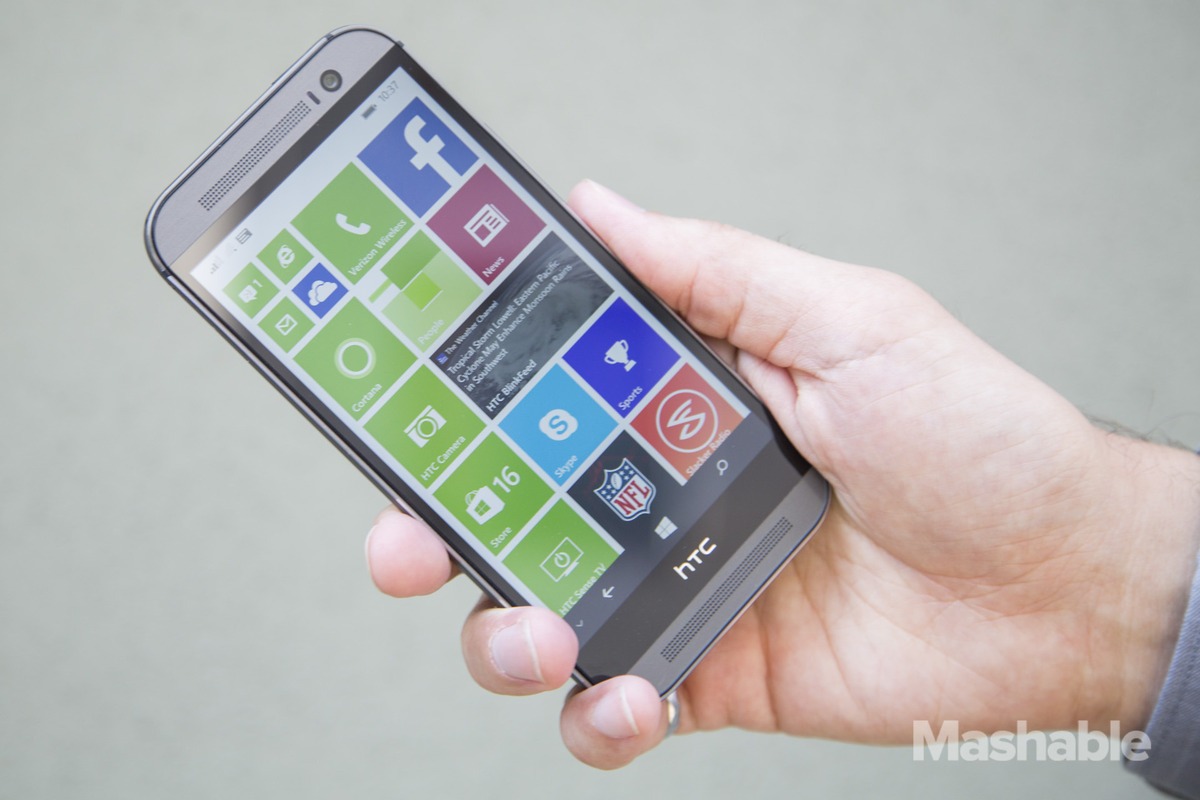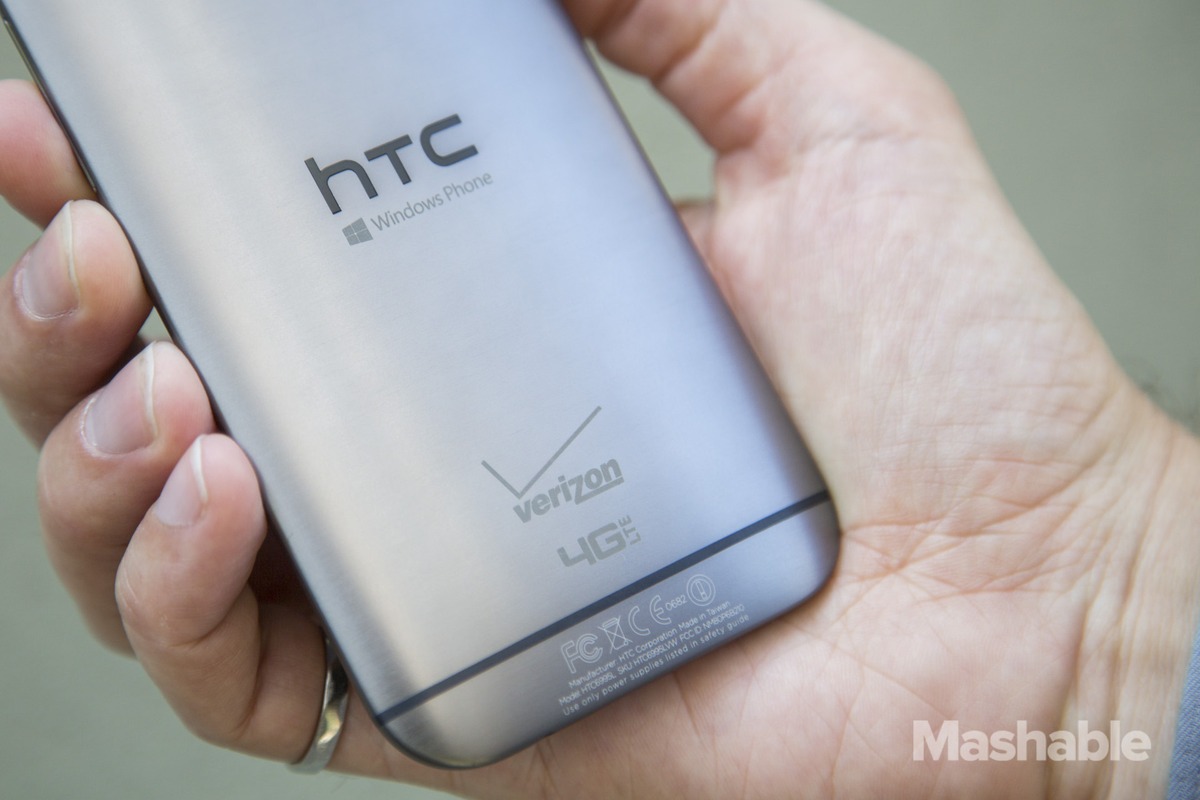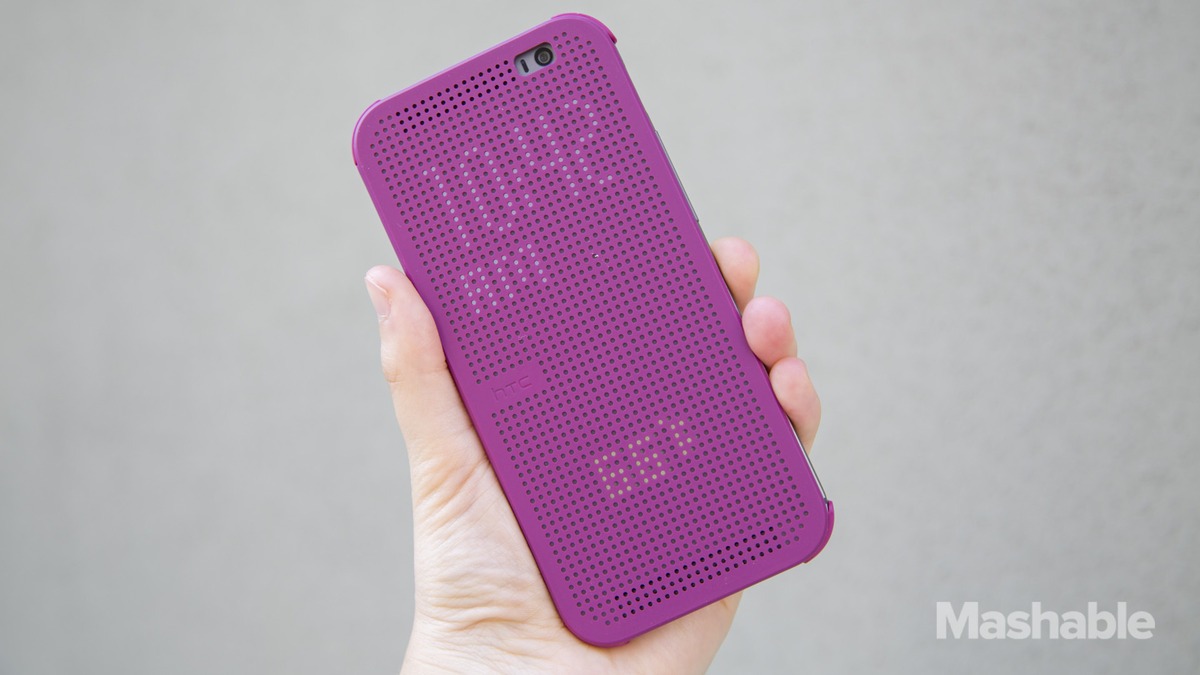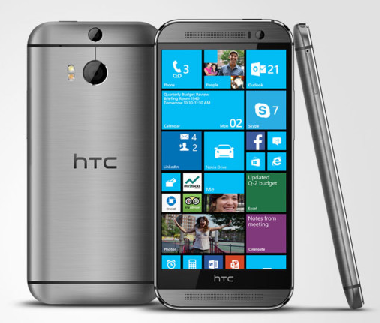HTC One M8 Still the Best Windows Flavor
While Nokia is a terrific ally in its fight to expand Windows Phone’s distant-third-place market share, the platform’s other seemingly disinterested hardware partners haven’t done much to help matters along. So when a device like the HTC One M8 hits the market with Live Tiles aboard, it’s enough reason for long-suffering Windows Phone users to stand up and take notice.
Right up front, the device is a little bit of a mixed bag. It’s perhaps too harsh to call the handset an afterthought, but as with the Samsung Ativ SE before it, the One M8 is a rebadge of sorts — actually it’s not so much a rebadge as the same phone we saw back in March running a different operating system. We’re quite literally dealing with a me-too device here, but hey, the One M8 was a solid phone the first time around (or, rather, the second), so its arrival will almost certainly be lauded by WPers.
And, really, when your mobile operating system is a distant third place, the proverbial sloppy seconds may not seem so bad after all, right?

Unibody is a wonderland
Again, if you’ve spent any time admiring the One M8’s Android twin, you know what you’re in for here. It’s essentially the same phone. And that, of course, is a really good thing. The HTC One line is a pretty strong contender for the nicest Android hardware around. The handset is brushed aluminum all over, save for the front, where it meets flush with the 5.1-inch Gorilla Glass 3 display.
The top and bottom of the screen are flanked by a pair of speaker grilles. Why front-facing speakers aren’t a more standardized feature on smartphones, I can’t really say for sure, but there’s really something intuitive in designing the thing. At top, you’ve got a front facing 5- megapixel camera, which does the trick for your web-conferencing/selfie needs.

The HTC One M8 for Windows carries over the hardware design, including relatively great-sounding stereo speakers
The lack of touch buttons along the bottom bezel is a bit of a bummer (say that ten times fast), but Microsoft’s recent addition of an onscreen navigation bar helps by adding home, back and search keys with a swipe up from the bottom of the screen.
Around back, you’ll catch a glimpse of the aforementioned brushed-aluminum unibody. The back fairly concave or, as HTC puts it, “a curved back that pours into your grip unlike any other Windows phone.” Ad copy hyperbole, sure, but it’s hard to argue that the handset feels a fair bit better in-hand than Nokia’s mostly square affairs.
The two black strips breaking up the metal monopoly on back are antennas, exposed to elements to get around the signal-blocking metal. You also get a pair of cameras back there — the Duo Camera — whose functionality we’ll be getting into down below. Smack in the middle of it all is an HTC logo, just above one for Windows Phone, so everyone knows what side you’re on.The aluminum unibody is gorgeous, although a bit heavy.
It bears repeating that the HTC M8 One is really a lovely phone from a design standpoint. Even if it failed on all other counts (it doesn’t, of course), it would still be far and away the prettiest Windows Phone you can currently buy. If there’s quibble to be found on purely aesthetic grounds, it’s that the phone is a bit thick and a little heavy, but those factors aren’t likely to be deal-breakers for any.
Sights, sounds and guts
Five inches really feels like the sweet spot for displays at the moment. Anything larger can get a bit unwieldy for day-to-day use and anything smaller… well, it makes us wonder how any of us managed so survive in the dark days of standardized four-inch screens.
The screen clocks in at a 1,920 x 1,080 resolution — the same as what you’ll find on the 5.1-inch Samsung Galaxy S5 or, perhaps more to the point, the five-inch Nokia Lumia Icon. All of that works out to a 441 ppi (pixels per inch) density. Compare that to, say, the 326 ppi on the iPhone 6 and you’re dealing with a mighty sharp screen here, one that makes those brightly colored Windows tiles really pop.
The speakers a strong point, too — and really, how often do you hear anyone say that smartphone? Or rather, how often do you hear us say that about a non-HTC smartphone? Aside from the aforementioned sensible placement, the BoomSound speakers actually sound pretty good. And they can get pretty loud without completely muddying up the fidelity.
Sure you’re not going to be able to power your upcoming Christmas caroling with the phone, but this is one of those rare occasions where we won’t tell you to just forgo the built-in speakers altogether. We propped the phone up with its case and enjoyed some sweet Spotify sounds while writing this here review without the aid of a separate Bluetooth speaker.
Things looks pretty similar inside, too. You’ve got a 2.3GHz quad-core Snapdragon process and 2GB of RAM, making for extremely zippy operations all around. Storage-wise you get a generous 32GB built-in, which can be expanded to a more than ample 128GB via the microSD slot. The 2600mAH battery meanwhile, is more than enough to get you through a day of heavy use.
Camera action
This is one place where HTC faces some truly stiff competition in the Windows Phone world. After all, picture-taking has sort of been Nokia’s thing for the past few years. The company’s dabbled in 41MP devices that looked a lot more like point-and-shoots than phones and has created its own devoted suite of apps for users who care a lot more about snapping off shots than, say, making phone calls. The Duo Camera on the HTC One M8 can capture depth information, which enables after-the-fact tricks such as refocusing.
Still, the M8 is no slouch. As mentioned above, the difference in cameras between the One and the One M8 is immediately apparent, which is to say that there are two lenses on the back of this phone.
As with Nokia’s PureView cameras, which let you figure out the framing of a photo after the fact, much of the appeal here is being able to worry about things after firing off a quick shot. The Duo cameras make for some pretty cool tricks, letting you futz with focus after taking a shot, like the Lytro. The space between lenses also makes it possible to take some 3D-esque shots.
The cameras also perform quite well in low light. I snapped off some photos at a rock show (yep, I was that guy), a traditionally tricky setting for smartphone photography and was impressed with the results.
The phone even shot some sharp video and audio of the band — an impressive feat when we’re talking the 21-person Polyphonic Spree. All that action did wreak a bit of havoc on the camera’s autofocus, however.
The Windows Phone difference
This, of course, is what really sets the HTC One M8 and the HTC One M8 apart (see what I did there?). It may seem minor to all of those outside of the Microsphere, but HTC’s decision to bring its flagship device to the Windows Phone World presents a bit of a watershed moment for devotees of the sometimes-maligned operating system.
HTC’s taken a fairly hands-off approach to its influence on Windows Phone 8.1, relying most on custom apps, which you can choose to pin to the front page if you see fit. The big exception is Dot View, a feature borrowed from the Android version, which — I won’t lie — I’m irrationally in love with.
The Dot case for the HTC One M8 is a clever bit of design and engineering.

It’s goofy and it’s not particularly useful, but in the few days that I’ve been walking around with the phone, it’s been a bit like learning a magic trick to meet people at bars. It’s a neat little talking point. Pick up the optional Dot View case and the phone displays the time, temperature and small notifications like calendar and email in an old-school dot-matrix pattern. It’s a gimmick, sure, but it’s an eye-catching one.
You can also swipe down on the Dot View screen to access Windows Phone’s new voice assistant, Cortana.
BlinkFeed is present, but again, it’s been relegated to the side. Pin it to the home screen, customize it with your social networks and news feeds, however, and you’ve got a nice little Live Tile aggregate of information that’s important to you.
Video Highlights have been around for a few iterations, creating highlight reels based on images you’ve taken, which are grouped into events by date. The app adds effects and Ken Burns-style pans pictures and tosses in a soundtrack for a slightly more cinematic approach to a picture gallery.
In all, there’s nothing too radical on the software front. As with Nokia’s offerings, HTC’s aim is mostly to compliment the already fairly full Windows Phone 8.1 experience.
Wrap-up
It’s certainly not a great sign for the respective health of Windows Phone that a months-old repurposed Android phone is an extremely strong contender for the best the operating system has to offer, but there we are. Of course, it helps that the One M8 was an extremely solid choice in amongst the overcrowded offerings on Google’s side of the fence.
If the company finds some success with the experiment, this could perhaps mark a minor but important turning point for Windows Phone. After all, it seems safe to assume that the effort that goes into porting a handset over to the Microsoft ecosystem is relatively minor compared to building a brand new phone from the ground up. And perhaps HTC’s own moves will cause other top Android manufacturers to sit up and take notice.
Given Microsoft’s extremely small footprint in the smartphone world, it’s probably wishful thinking to imagine the day when phones are released simultaneously for the operating systems like gaming titles on consoles, but even a several-months-belated release beats the dregs that Windows Phone users have traditionally been forced to subsist on. Not you, Nokia — you’re cool.
The HTC One M8 is a beautiful and terrific piece of hardware. It’s zippy, it has a nice screen and solid speakers and it gets along with Windows Phone 8.1 just great. And as we’ve noted in the past, Microsoft has done an excellent job over the past couple years playing catch-up on the feature set after a losing a several year head start.
It’s true: The app selection is still lacking, but most of the biggies are here. With Facebook, Spotify, Instagram, Twitter and the like, it’s a gulf that many mainstream users may not even pick up on. And, of course, if an everyone phone like the HTC One M8 that winds up in Redmond’s clutches, there’s even more reason for developers to consider the tiled universe.
The Good
Beautiful Hardware • Great camera and speakers • Decent suite of custom apps
The Bad
A bit on the thick side • Pretty much the same phone as the months-old Android version
The Bottom Line
HTC took its months-old flagship Android phone and repurposed it for Microsoft users. And that’s enough to make the device a strong contender for the best Windows Phone out there.
Images: Mashable, Christina Ascani
Have something to add to this story? Share it in the comments.







